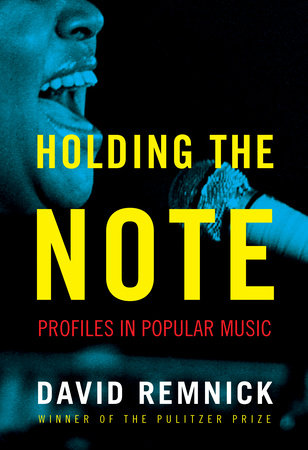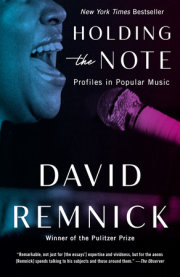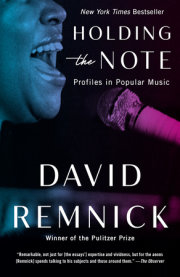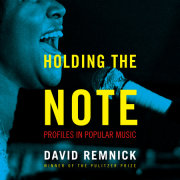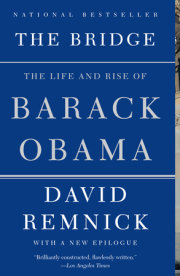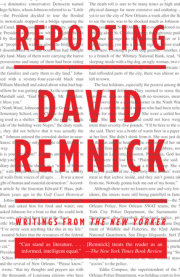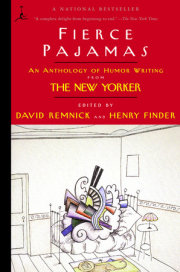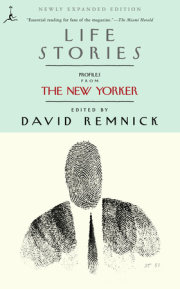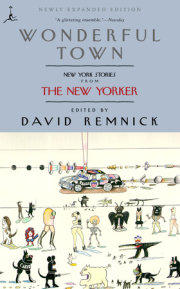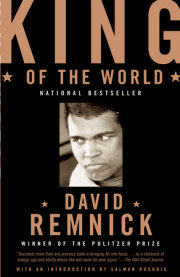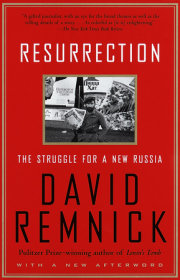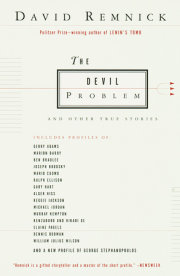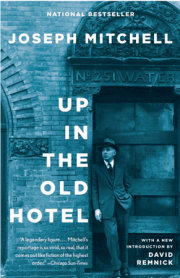Preface
Sometimes, when I go to hear music, I feel like a weekend naturalist of the Anthropocene feverishly trying to catch a last glimpse of some glorious species: James Brown ringing out New Year’s Eve at the Apollo; Paul Simon in a rainstorm in Forest Hills; Aretha Franklin fronting a pickup orchestra at a casino in Ontario. The urge to see aging performers while we still can is an inheritance. My parents suffered from neurological ailments that eventually made it impossible for them to work or get around easily—my mother with MS in her early thirties, my father with Parkinson’s in his fifties— and yet they somehow managed to bring my brother and me, who were children in the era of the Beatles, to see Louis Armstrong, Ella Fitzgerald, Dizzy Gillespie, Dave Brubeck, Nina Simone. Before my father had to shut down his small practice, he was surely the only dentist in the New York metropolitan area who replaced Muzak with Big Mama Thornton and Screamin’ Jay Hawkins to accompany the sound of the drill and the spit sink.
On a typical grownup venture—this one about a quarter century in the past—I emerged from the subway in the Village on a June afternoon and headed to a now-defunct club called Sweet Basil to see Doc Cheatham, a top-flight trumpet player from the very early days of jazz, who played a brunch gig there on Sundays. Cheatham was just shy of ninety. To miss him would be unforgivable. His first appearance on a record was as a sideman for Ma Rainey.
It was hot out on Seventh Avenue but the club was comfortingly dark and cool. I took a seat at a shared table near the back of the bar. Cheatham, trailed by his bandmates, made his way to the bandstand. He walked with the aid of a collapsible cane and wore oversized aviator glasses. What few strands of hair he had left he dyed chestnut and combed forward over the crown of his skull. The crowd, drinking mimosas and Bloody Marys, came dressed in jeans, shorts, T-shirts. This was not Cheatham’s style. He was pin sharp, gaily professional, wearing an apricot shirt, a red-print tie, a green linen jacket, and cream-colored slacks held up by skinny red galluses.
Cheatham was born in 1905, in Nashville. He went by Adolphus until he started playing music for patients at a medical clinic and won his nickname for life. Doc’s father played mandolin and was a barber on riverboats. His mother was a teacher. He took up music at fourteen, playing drums and coronet in school and church bands, and then, first as a sax player, then as a trumpet player, started hooking up with small-time professional gigs: carnivals, parade wagons, coal-mine dances. He played in the pit of the Bijou Theatre behind Bessie Smith and Ethel Waters. Following the Great Migration north to Chicago, he got work at the Dreamland Café, where the Prohibition-era clientele drank bathtub gin out of teacups. One day, he encountered King Oliver on the street and expressed his admiration. Oliver, who had been Armstrong’s mentor, gave Doc a gift, a beat-up tarnished copper mute that Cheatham stuffed in his horn for the next seventy-odd years. Doc even played behind the man who claimed to have invented jazz itself, Jelly Roll Morton. On the bandstand, at Sweet Basil, he paid homage:
“This next one’s by Jelly Roll Morton,” he said. “Not everyone used to like him. He’d stand on the corner all day bragging about being the greatest composer in the world. Of course, he could back it up. He wore a diamond in his front tooth. Wore a twentydollar gold piece in the tips of his shoes. He didn’t play in places like this. Didn’t play in the Waldorf-Astoria. Mostly, he played in bodegas . . .”
“Bordellos, Doc, bordellos,” the pianist Chuck Folds said, with a practiced roll of the eyes.
“Yeah, bordellos,” Cheatham said. “ ’Cause, he was also a pimp.”
Cheatham played for an hour or so, mainly New Orleans standards from his youth. In his off-hours, he was making music with much younger musicians. He was not stuck in the past. He’d just met Nicholas Payton, a quicksilver trumpet player in his twenties, and soon they’d win a Grammy for their collaboration.
Cheatham was mindful of time: he tapped his foot to the gunshot of the snare, he played just behind the pillowy pulse of the bass. He soloed in measured steps. He knew better than to overextend himself. His solos were brief, witty, resonant; he took his leave before he lost his breath or his way. He did not need to strain in order to glow. When he used King Oliver’s mute, it was to summon that distant elder, but always with attention to the song—nothing maudlin or academic about it.
After the set, I had a chance to talk with Cheatham at a table in the back. “The truth is, I was a late bloomer,” he said. “I didn’t even know there was a place called New Orleans until 1926. Nashville was a two-college town, nothing to listen to, dead as hell in those days. But when I got to Chicago, that town was filled with New Orleans musicians. Louis Armstrong was inspiring everyone, me included.”
Before Cheatham headed back to the bandstand I asked him if he’d be playing Sunday brunches at Sweet Basil in ten years, when he’d be a hundred. “I don’t know,” he said. “This place may not be standing in ten years. But we’ll see.”
The pieces in this volume were written over time for The New Yorker and are the result of my earliest enthusiasms. In every case, I encountered these artists in late career. The voices had weathered. In nearly every case, the best songs and the best performances were well in the past. They were all grappling, in music and in their own lives, with their diminishing gifts and mortality. Yet there was never any diminishment in the desire to make music—to hold the note.
Just as I was collecting these pieces, one songwriter and performer who had long dodged my requests to meet with her, Joni Mitchell, emerged at the Newport Folk Festival to play her first full set of music in two decades. Mitchell had been dealing for years with various ailments; in 2015, she suffered a brain aneurysm that nearly killed her. When she was a child, polio left her unable to walk for a while. But, as she told a reporter, “the aneurysm took away a lot more, really. Took away my speech and my ability to walk. And, you know, I got my speech back quickly, but the walking I’m still struggling with.”
Mitchell warmed up to playing in public again slowly. She began hosting private jams—“Joni jams”—at her house in Los Angeles. Brandi Carlisle, Paul McCartney, Chaka Khan, Bonnie Raitt, Herbie Hancock, and others came by to play, to talk, to sing.
At Newport, a festival she last played in 1969, Mitchell took the stage in front of ten thousand people and was surrounded by a raft of musicians, including Carlisle, Celisse Henderson, Wynonna Judd, and Blake Mills. She sat in a magnificently garish armchair and sang a full set, from “Carey” to “The Circle Game.” She pleased herself with songs of her own past—Frankie Lymon & the Teenagers’ “Why Do Fools Fall in Love,” Gershwin’s “Summertime,” the Clovers’ “Love Potion No. 9.” Her voice was far deeper than it was when she recorded Blue, her masterpiece, but Brandi Carlisle was there to provide the soprano filigree. Celisse Henderson, playing guitar with the attack of Sister Rosetta Tharpe, delighted Joni with a uniquely jagged version of “Help Me.” Mitchell loved it all: the crowd, the companionship onstage, the sheer aliveness of the moment. And in the end, from the open air of Newport to the rest of us getting the full report on YouTube, it was the spectacle of Joni, determined and joyful, singing “Both Sides Now” that left every listener not just moved and grateful, but altered.
But now old friends are acting strange. They shake their heads, they say I’ve changed. Well, something’s lost, but something’s gained in living every day.
A young woman’s song, written in 1966 after she’d read Henderson the Rain King on a flight above a bank of clouds, had reshaped itself. Something was lost, something was gained.
For musicians late in their careers, it’s the spirit of sostenuto, of sustain, that prevails: writing, playing, and performing keeps them in the game, helping to replenish what age has attenuated. For listeners like my father, music is also a source of resilience. Music had long ago ceased being a matter of cool or fashion, of keeping up. He listened to what he loved, no matter the period. When he told me some detail of his past—hearing Sidney Bechet at a club in Paris when he was in the Army—or when he recommended something to me or, less often, took a recommendation of mine, the pleasure was so evident it seemed almost illicit.
When I was in college, he called to tell me that a singer named Alberta Hunter was performing at a club in the Village called the Cookery. I should be sure to go see her, he said, and, as a way of insisting, he sent me a check for twenty dollars to pay the cover charge. Hunter, who was a contemporary of Bessie Smith’s, was the Memphis-born daughter of a Pullman porter. As a girl, she ran off to Chicago to sing the blues, and she became friends with Armstrong, Ma Rainey, Sophie Tucker, and King Oliver. She cowrote “Downhearted Blues” with Lovie Austin: Trouble, trouble, I’ve had it all my days. After Hunter’s mother died, in 1954, she spent the next couple of decades working as a registered nurse at a hospital on Roosevelt Island. Now that she had retired from nursing, Hunter decided that she would sing again. My father had led me once more to the blues, to one of the originals, in her last years. Hunter, that night at the Cookery, was bawdy, fearless, magnificently alive. The voice was ragged, but the wear hardly detracted from the feeling. She would go out singing. Years later, at my father’s funeral, we set up a boom box and played his favorite music. People left the synagogue to the strains of “Downhearted Blues.”
Copyright © 2023 by David Remnick. All rights reserved. No part of this excerpt may be reproduced or reprinted without permission in writing from the publisher.

